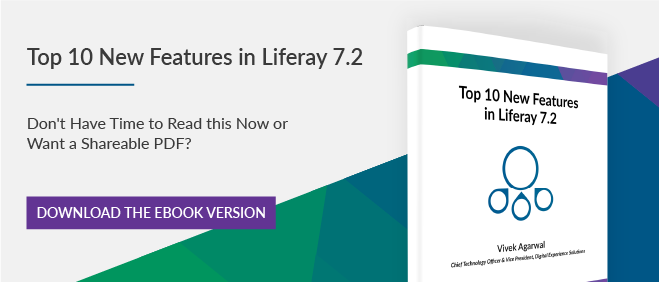As many of you know we have been working for 13+ years on the Liferay platform, ever since the Liferay v3.6 days (circa 2006), and have seen the platform evolve and grow significantly over the years with each release. The recent release of Liferay DXP 7.2 is one of the more exciting releases for me, a long-time Liferay aficionado; in fact, this is the first release since v6.2 that truly excites me because of the new business features that this release introduces. In this article, I will walk you through my favorite 10 new features in Liferay DXP v7.2.
All the features that I included in my “Top New Features in Liferay DXP 7.2” list were easy to pick as they are big-bang features that affect most Liferay customers and many of XTIVIA’s own customers have experienced the need for these – on the other hand given the vast number of features to pick from, determining what makes the cut and what features to leave out involved some tough choices and I am sure you can make a case for some that I left out.
I would love to hear from you regardless of whether you agree or disagree with my choices. Please do comment on this blog post or tweet me @vivagarwal, and let’s get a healthy debate and/or poll going.
Before I dive into the core of my article, let me just set the stage…
Liferay DXP 7.2 Introduction
Every great company and product has a vision and Liferay DXP is no different – Liferay’s vision for its Liferay DXP product is that it is the enabler to “Make real transformation happen”. This vision has led Liferay to build Liferay DXP as the platform that enables Liferay’s customers to –
- Unify customer experiences
- Transform business operations
- Evolve digital strategy as transformation is a journey, and it is never complete.
With this product vision as the North Star, the main theme of Liferay DXP v7.2 is to help “deliver personalized experiences at scale”. This is enabled through four pillars –
- Create Experiences – Enable business users to create engaging content pages more simply
- Personalize Experiences – Make meaningful connections with customers through personalized, contextualized experiences
- Manage Digital Assets – Equip business users with the tools to manage their digital assets with higher productivity
- Think Headless – Enable developers to create experiences with the flexibility of a decoupled CMS architecture
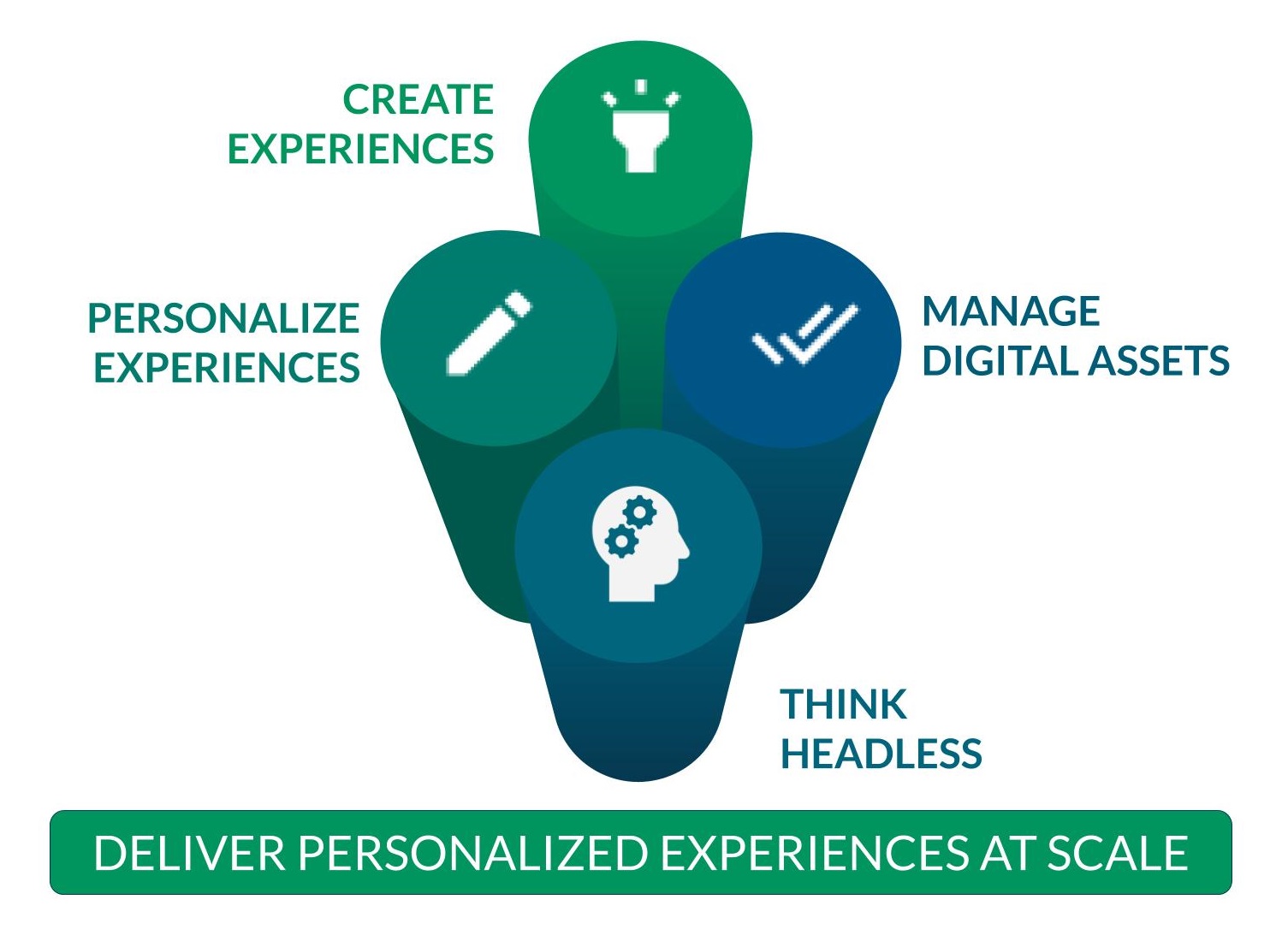
Figure 1: Liferay DXP 7.2 Release Theme
This product release theme translates into a number of exciting features, and without further ado, let me dive into my top new features of Liferay DXP 7.2.
Top 10 New Liferay DXP 7.2 Features
1. Personalized Experiences
I start with my favorite – personalization. At XTIVIA, we have implemented personalization starting with IBM WebSphere Portal and its Personalization component in the mid-2000s, and we added our own custom personalization framework to Liferay v5.2 in 2010. Liferay introduced audience targeting in v6.2, and solidified it in Liferay DXP v7.0. However, we had experienced several limitations in our real-world implementations including lack of support for complex and-or operations on personalization attributes, scalability issues with behavior-based personalization, and lack of support for personalizing pages and portlets among others. Liferay DXP 7.2 addresses these and other challenges.
Recognizing the vital role that personalization plays in meeting today’s marketer and user expectations, Liferay has moved personalization into the core platform rather than providing audience targeting as an add-on plugin and significantly enhanced its capabilities –
- You can now personalize the user’s experience starting with site navigation and page layouts through portlet visibility and content. You can change just about anything that different user segments see on a given page creating differentiated experiences for each segment.
- You can now create complex rules with AND-OR logic to dynamically and efficiently segment site visitors and logged-in users.
- You can now personalize content for a site visitor based on their past behavior and topic interests leveraging integration with Analytics Cloud so that you no longer have the same scalability issues as you did with 7.0 and 7.1. However, this feature is still in beta and I am eager to see this move into the GA phase.
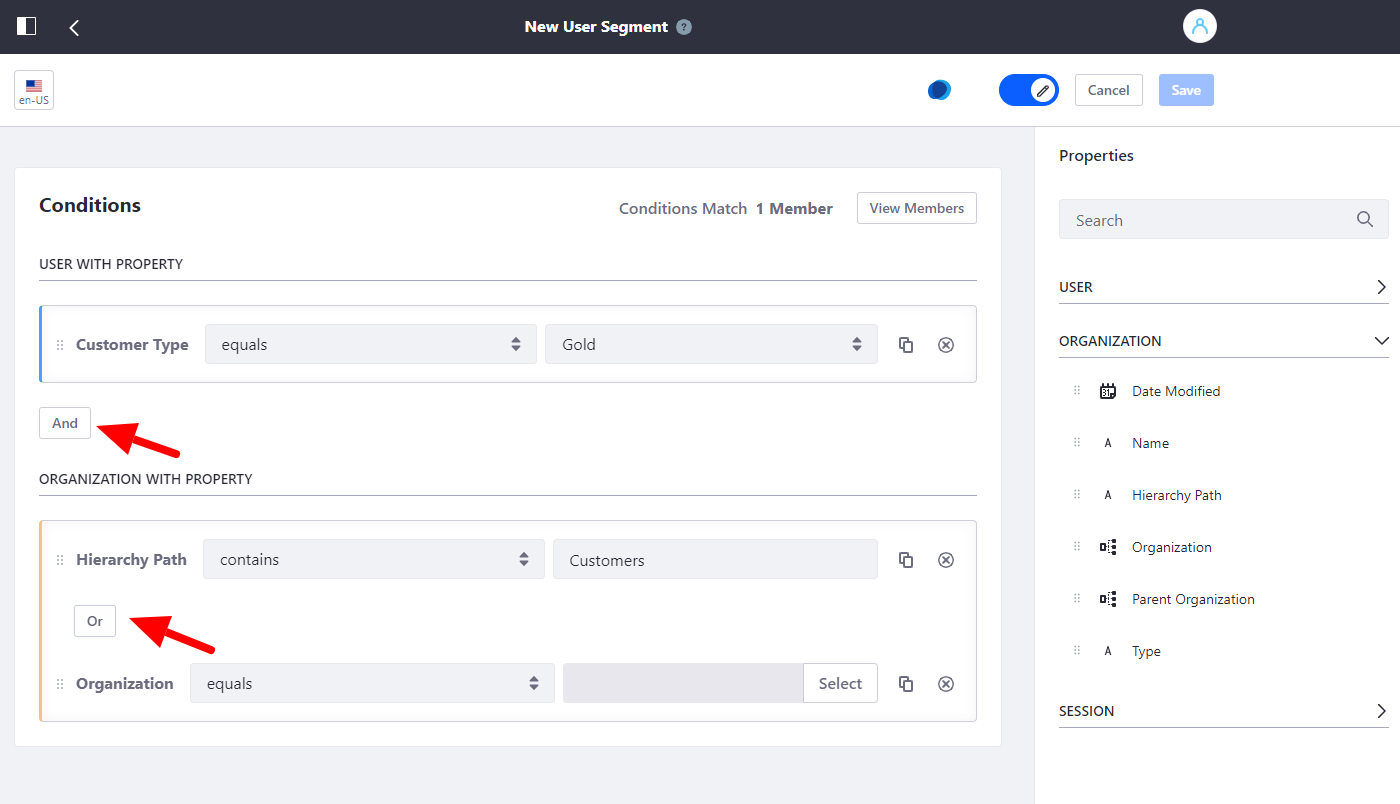
Figure 2: Creating a User Segment with Complex AND-OR Logic
2. Headless support
There has been growing interest around headless CMS and Content-as-a-Service, and many “pure” headless CMS products have appeared on the market over the years. While you don’t want to go with a headless CMS approach lightly (see my article about headless CMS and Content-as-a-Service), there are good reasons today why you might want to especially with the number of “heads” that you might have – websites, single page apps, mobile apps, IoT devices, wearables, and more.
In v7.2, Liferay provides enhanced support for headless or decoupled CMS while still offering traditional CMS capabilities in the form of an out-of-the-box UI for rendering content via the web – in other words, Liferay can now truly claim to be a hybrid CMS offering content and personalization as a service now. While Liferay has had an API layer in past versions, it was not optimized for the content-as-a-service use case. Liferay’s new REST APIs are defined to adhere to the OpenAPI v3.0 (formerly known as Swagger) specifications – easing their generation and consumption by other systems. They are secured using OAuth 2.0 and Liferay security so that you don’t have to worry about content security. When returning results sets the APIs include Filtering and Sorting, support Pagination (i.e. “get next x records”) and allow developers to specify just the fields they want returned (aka “Sparse Fieldsets”). And the APIs include full multi-lingual support.
Liferay DXP 7.2 provides APIs for StructuredContent, ContentStructure, Blogs, Document, Folder, Asset List, Categories and more.
2.1. Content sets
Asset Publisher has long been my favorite for displaying content lists in Liferay, and I refer to it as the swiss army knife for slicing and dicing content dynamically (you can manually select content too). While this selection capability is powerful, its utility is limited to Asset Publisher portlets and cannot be leveraged in a decoupled CMS approach. Content Sets address this limitation by allowing you to define decoupled lists of dynamic or manually selected content. These content sets can then be accessed through REST APIs to support the Headless use case or used in any number of Asset Publishers (as an alternative to the existing Asset Publisher definition). And content sets can also be targeted to specific user segments to enable content personalization.
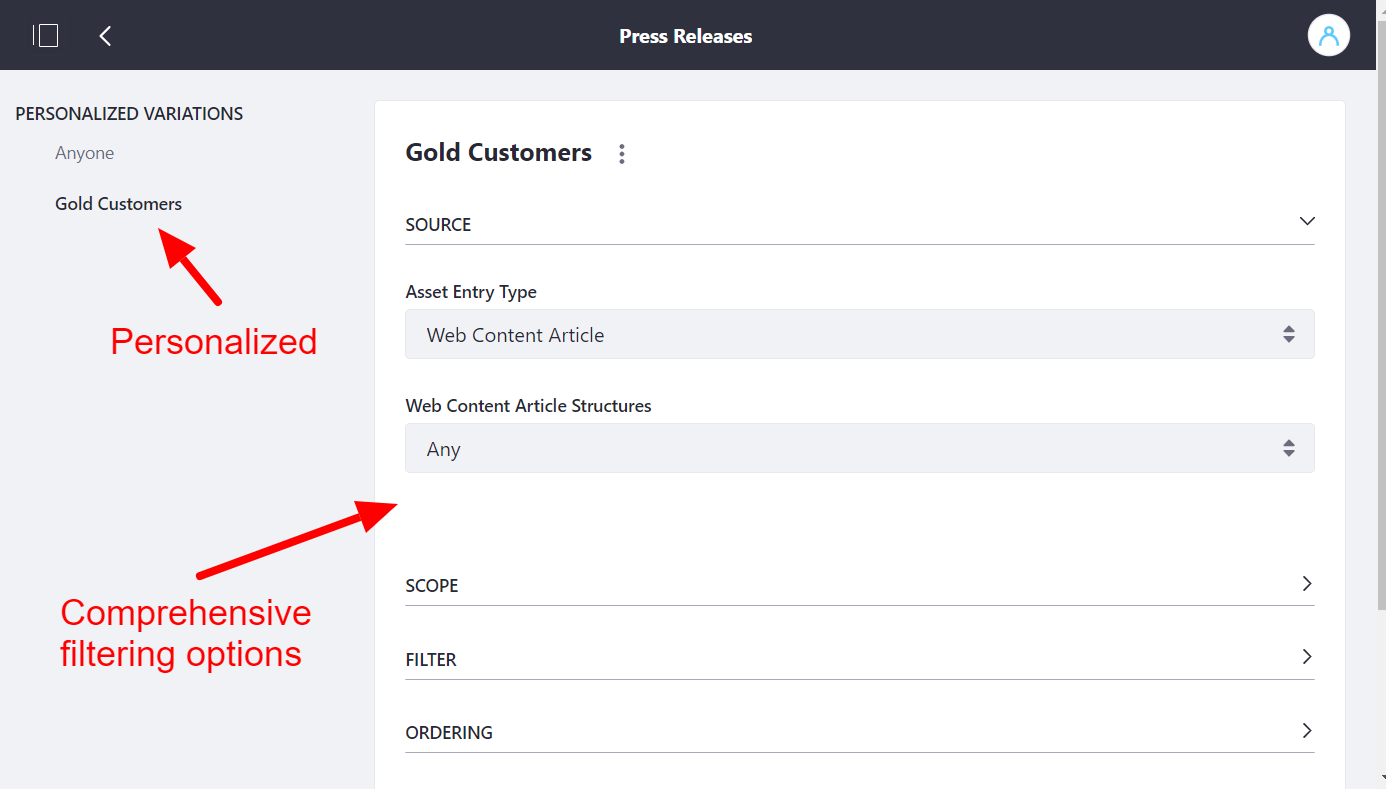
Figure 3: Personalized Content Sets
Content sets could be considered as a standalone feature but I think of them as an enabler for headless.
3. Auto-tagging Images, Documents and Web Content
While there is tremendous buzz about AI and ML, the reality today is quite different from the hype – you may have heard the joke that AI is what you hear about in PowerPoints and ML is what you can see and use today. There are many good use cases of ML today in fraud detection, product recommendations (available in Liferay Commerce 2.0 – based on product content such as specifications, description and categorization, based on what other customers similar to them bought, and based on what other customers bought related to the product being viewed), voice recognition, and more.
Liferay 7.2 implements the first use case of ML in Liferay DXP, leveraging third-party ML services (such as TensorFlow, and Google Cloud Vision, Google Cloud Natural Language API, Apache OpenNLP) to automatically add metadata and tags to Images, Documents and Web Content. If you have a large number of assets in your Liferay system, this is an immensely useful feature – it improves the searchability of your assets, becomes an enabler for personalized experiences, and of course, eliminates manual, tedious work.
And like most Liferay features, this auto-tagging capability is available via an API that can be used to auto-tag any Liferay asset, including custom assets.
4. Peer-to-Peer Document Sharing
While Liferay has supported the concept of a document library and shared documents for time immemorial, document sharing was based on role-based access control (RBAC) and only authorized users could share them. With 7.2, any registered users can now share Documents and Media files directly with each other, granting View, Comment, or Update permissions. Additionally, they can grant re-sharing permissions to other users. Users can easily access documents shared with them via a new “Shared with me” application in the user panel.
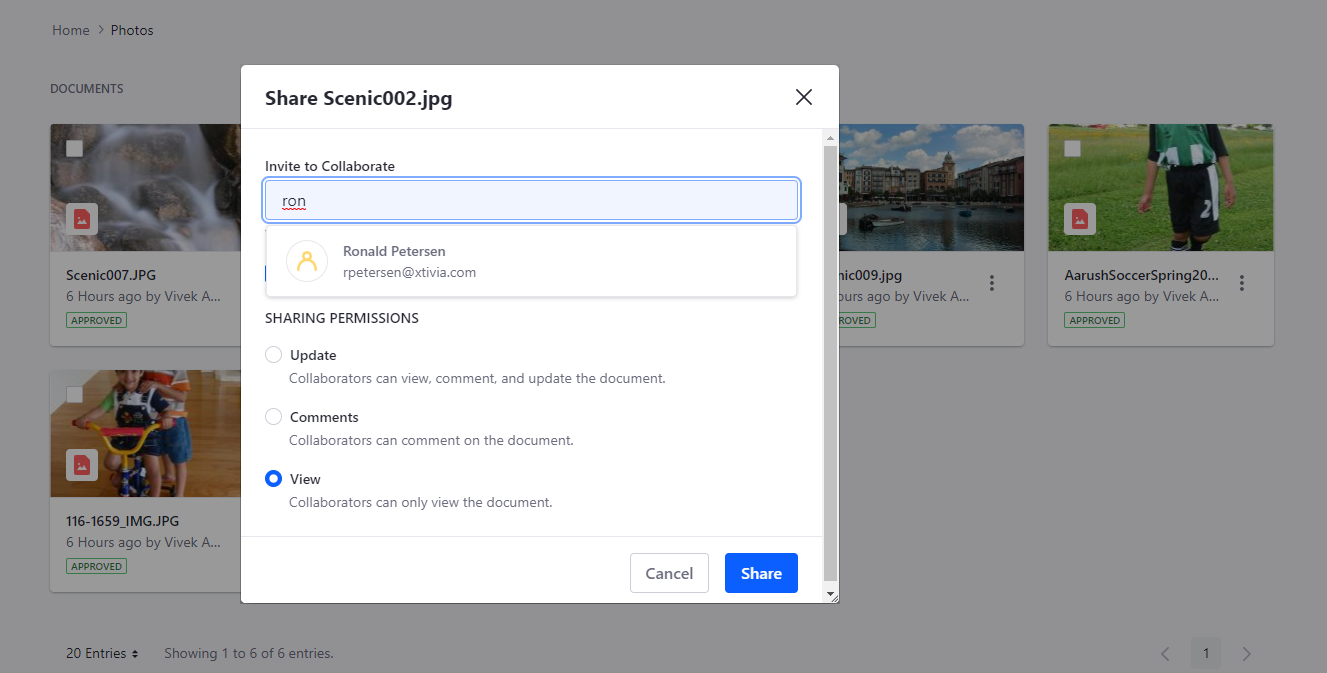
Figure 4: Peer-to-Peer Document Sharing: Share Document Dialog
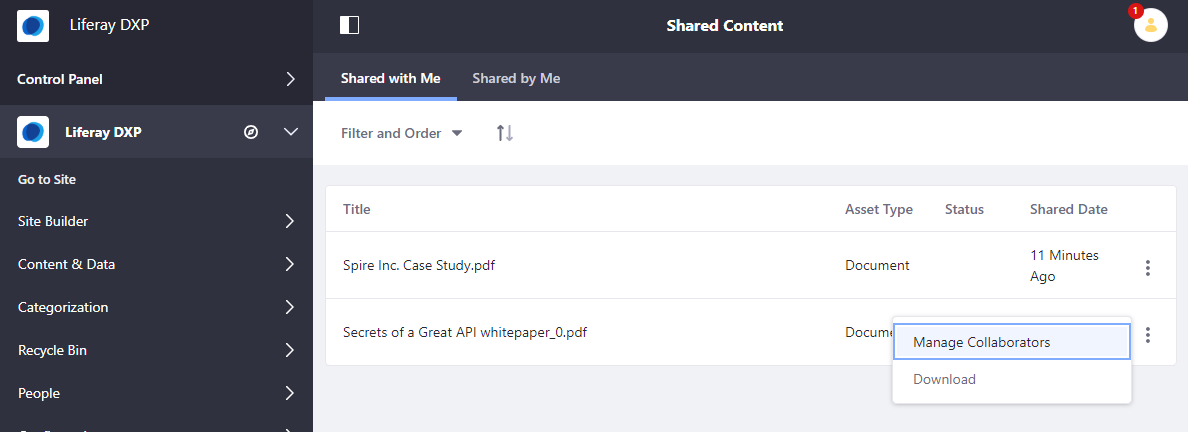
Figure 5: Peer-to-Peer Document Sharing: Shared With Me App
To be clear, users cannot grant permissions that they do not have on a document that they are attempting to share and the document owner or the admin are the only ones that can start the sharing.
5. Google Document Editing
An interesting new feature in Liferay DXP 7.2 is the capability for organizations that invest in both Liferay DXP and G Suite from Google, to allow their users to create and edit Liferay Documents online via Google Docs, Google Sheets and Google Slides and take advantage of the collaboration that engenders. The Google editors are leveraged for their online editing capabilities while the actual file is stored in Liferay’s Documents and Media library. For multiple users to collaborate on a single Google document, each of these users need to have a Google User account, and the Google document owner/editor needs to share the document with the other users inside the Google UI.
While this online document editing feature is provided through Google in 7.2, Liferay plans to make this available through Microsoft Office 365 soon.
6. In-Context Content Preview
Previous Liferay versions had limitations when it came to previewing web content as either a content editor or as a content approver in a workflow. You could only preview the article using the out-of-the-box Liferay theme, which meant that your content did not preview with any custom styles defined in a custom theme – as a result, you really were not sure of the visual formatting. In Liferay 7.2, we can kiss this limitation goodbye.
In 7.2, Liferay DXP adds a new feature that allows content to be previewed in the context of its default Display Page. This preview allows Draft content, and Content that is currently in a Workflow (and hence not yet published) to be previewed using the right styling.
This feature does require a Display Page to have been created and assigned to the content article. In case, you are creating an article that does not have a true “Display Page”, then you will want to have a hidden “Display Page” with the right theme created and use that as the “Display Page” on your article for preview purposes.
7. Search
Search has seen a number of advancements in Liferay DXP 7.2 starting with new widgets, new APIs and new infrastructure to really a new search experience. My personal favorite among these is the “Page Search” capability – in the past, Liferay search has been asset-based, and if for example, you have a product information page with multiple web content articles making up the page body, and each of them contains the product name, then a search for the product name results in multiple matches each linking to the same product page. This has been a significant issue that prevented usage of Liferay’s built-in search for site search, in particular for public-facing sites.
Additionally, Liferay DXP 7.2 introduces a Page-Crawler that can be pointed to third-party, non-Liferay sites, crawl and index their pages, and be searched within Liferay.
Some other noteworthy search enhancements include –
- Administrators can now customize search results to ensure that more relevant content is featured more prominently in searches. This is now available from within a new Search Admin feature in the Liferay UI that includes –
- Create custom rankings for queries
- Pin , hide, add, and reorder results
- Create custom synonym mappings
- Adjust field weights for specific asset types
- A new “Sort” widget that allows users to reorder the search results based on the value of certain keyword fields, for example, the ability to sort by the title field in alphabetical order. The default sort is determined by the search engine’s Relevance calculation. An administrator can add additional options to the Sort widget, as long as the fields being added are “keyword” fields.
You can learn more about what’s new in Search in the Liferay Help Center.
8. Improved Content Pages With Widget Support
Liferay DXP 7.1 introduced marketing-friendly, content pages but there was a pretty significant limitation that they did not support combining content fragments with portlets (aka widgets). Liferay DXP 7.2 removes this limitation, and additionally includes many more content page usability and capability enhancements-
- Marketers and content authors no longer need developers to build out a library of page fragments. Fragments can now be composed by a non-technical individual using a library of out-of-the-box fragment elements that can be visually aggregated to create new fragment designs.
- Simple management of content page sections – from the full page width to smaller layouts within.
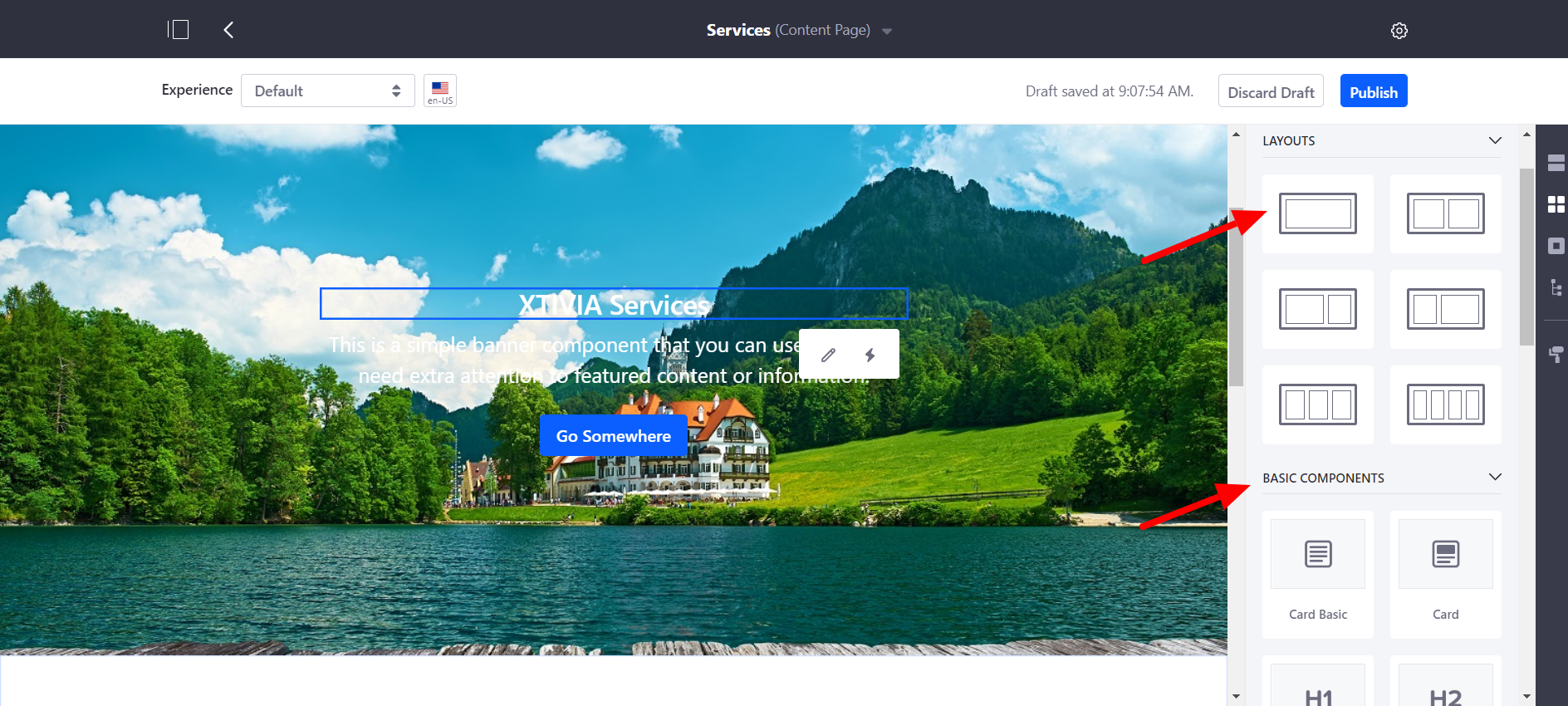
Figure 6: Enhanced Content Pages: Fragment Builder
A related new v7.2 capability is the new “Liferay Fragments CLI” tool that allows you to create fragments inside Liferay and export them for reuse in other environments, as well as create fragments outside Liferay (using your favorite editor) and import them into Liferay.
9. Streamlined Content Authoring
The Web Content Management experience has been streamlined to allow content authors to focus on writing with a fluid and distraction-free authoring experience.
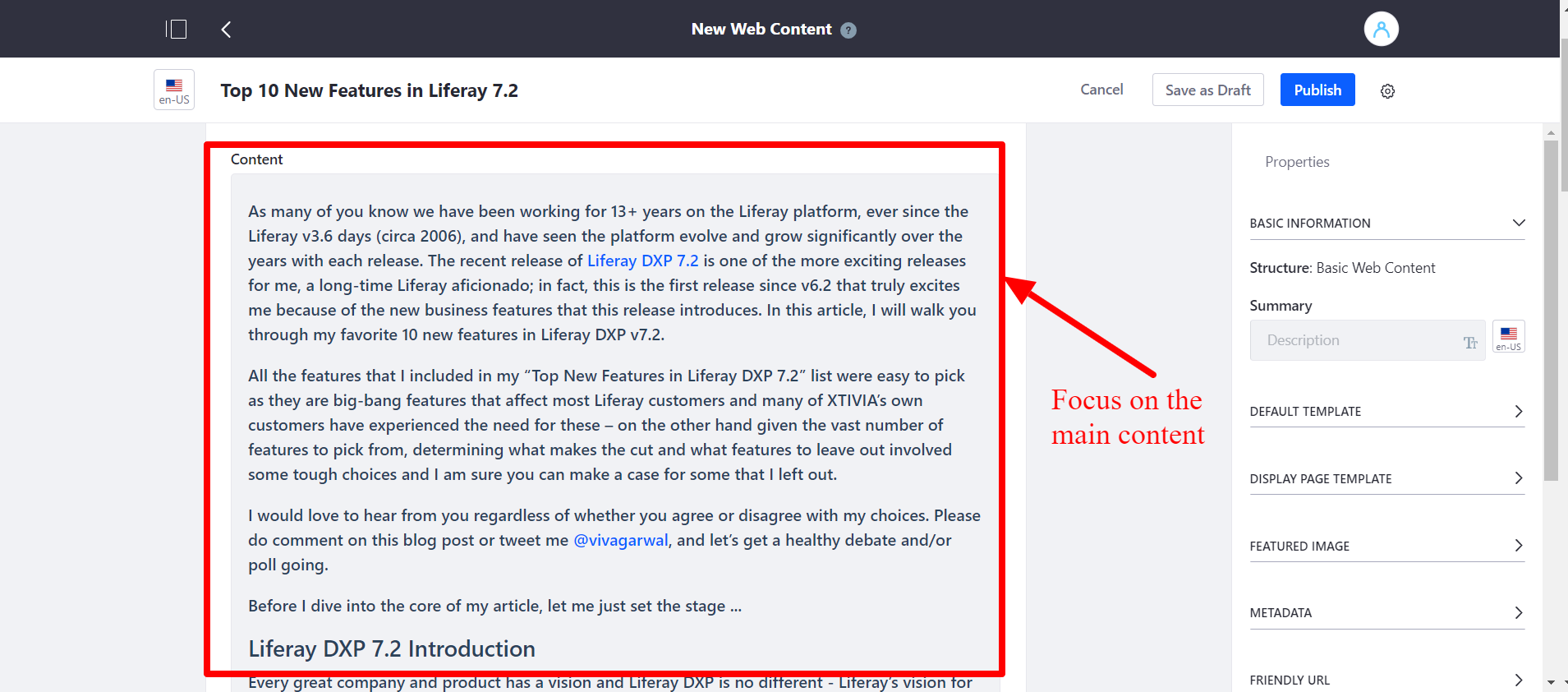
Figure 7: Streamlined Content Authoring in Liferay DXP 7.2
As you can see in the screenshot above, the content editor can focus on the content itself and content metadata fields such as tags, related assets, publishing schedule and more have now been moved to a new panel on the right and logically grouped. This should increase content editor productivity and make it easier to onramp new authors/editors.
10. Workflow Performance Reports and Identification of Bottlenecks
Liferay Workflows have been used in previous versions to quickly implement business processes, and Liferay DXP 7.2 introduces an enhanced management interface for monitoring workflow submissions, globally, for admin users through the control panel, and reporting to provide a more integrated way to understand the work in progress, assign tasks, visualize statuses and what are the instances that they have in the workflow pipeline.
Other Notable New Liferay DXP 7.2 Features
While the following features did not make the cut for my top 10 list, they are not to be scoffed at –
- Flexible page layouts in content pages where you can define the number of columns and their widths while keeping them responsive.
- Ability to bulk categorize or tag assets in Documents & Media (append or replace)
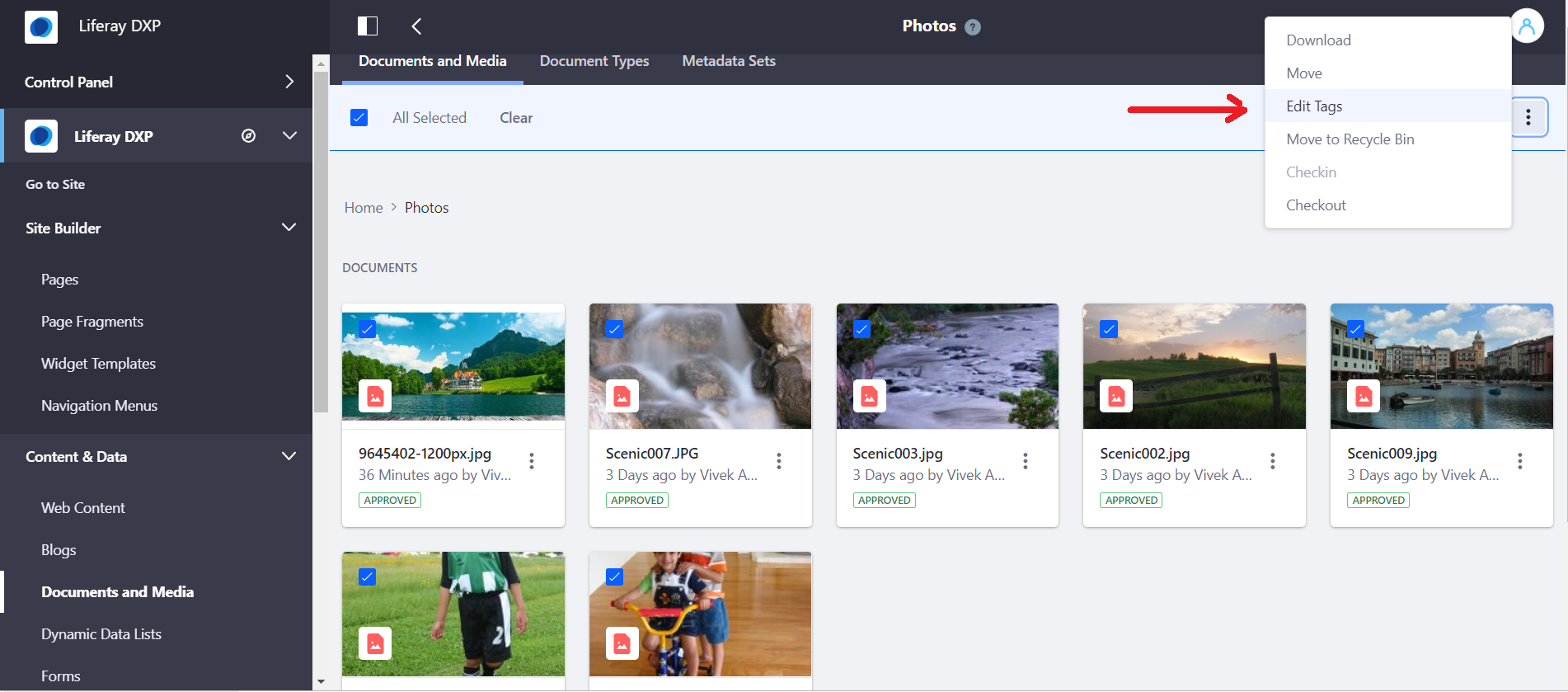
Figure 8: Bulk Tagging in Liferay DXP 7.2
- Ability to easily identify pages where a given web content article is being displayed, and by corollary identify unused web content.
- An exciting new feature that makes an entry in Liferay DXP 7.2 is Change Lists but this feature is not yet fully baked (it is in beta and provides limited functionality). However, it has huge potential in terms of making it easier to publish content changes in cohesive sets (currently you use local/remote staging or LAR export/import to accomplish this).
Change Lists provide a mechanism to track asset changes by grouping them and you can publish Change Lists when they’re ready. This allows your content management team to work on a “content project” in the background, complete the changes, and launch them as a cohesive set when they are ready. This can be used to launch campaigns such as a new product release or a Fall sales promotion on a certain date when all the pages, web content, documents, media and other related assets associated with that campaign go live together. And one aspect that really excites me about Change Lists is the fact that they can span multiple sites – often enough, our large Liferay customers have changes to multiple sites (and Global scope) that they want to release at the same time and Change Lists will make this easier.
While this is the promise, the reality is not there yet. At this time, Change Lists do not support all the asset types, just web content, and they do not support Pages. So, right now, this feature is on my watchlist (and should be on yours) but for all intents and purposes is not usable.
In Closing: Liferay DXP 7.2 Rocks!
So that was my top 10 list of new features and key enhancements in Liferay DXP 7.2 – no wonder, I am EXCITED about this release. Feel free to join the discussion by commenting on this post or contacting us or tweet me at @vivagarwal.
Be sure to check out Liferay DXP 7.2, or contact me to discuss my favorite features, to learn more about the other new features or see a demo.


